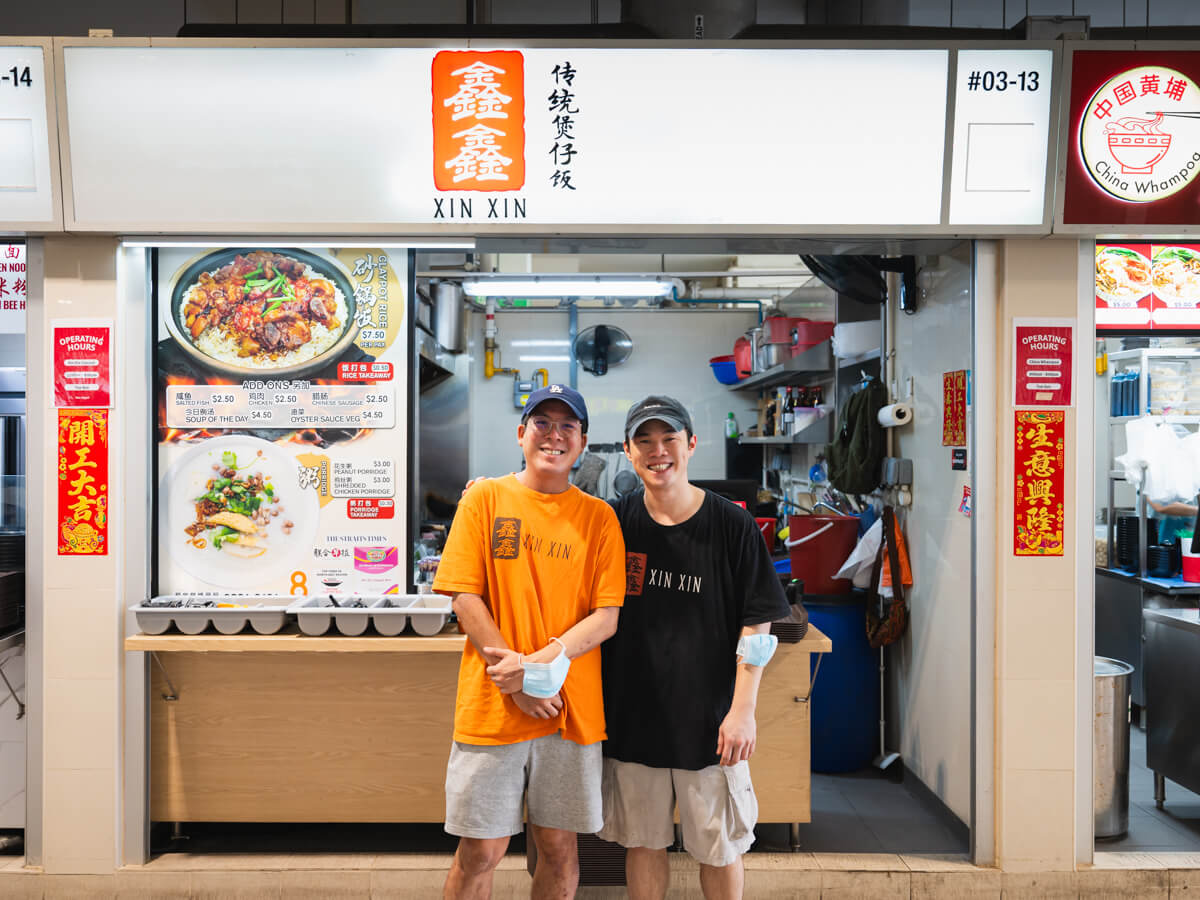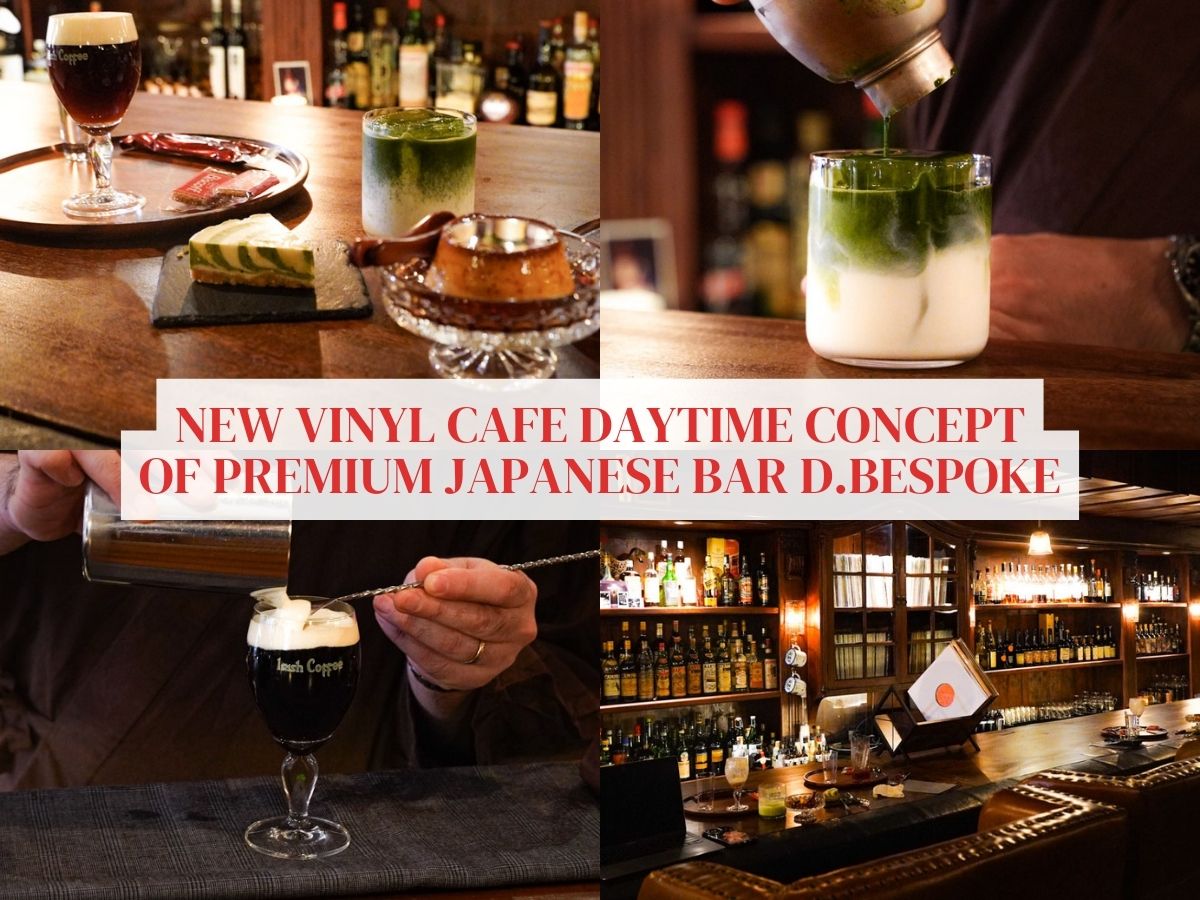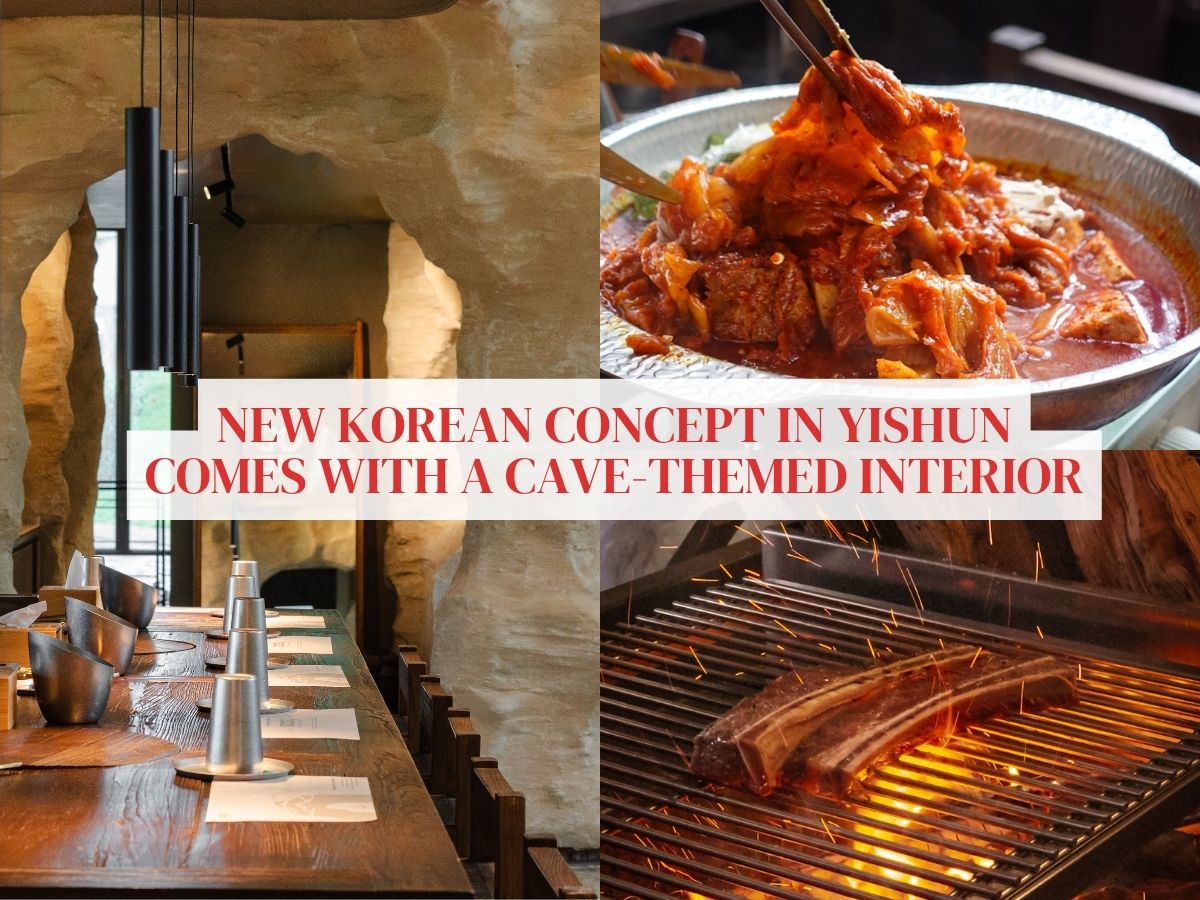Xin Xin Claypot Rice’s millennial hawkers with a burning passion for this old-school trade
- For the last six years, the two friends behind Xin Xin Claypot Rice have gained a steady following.
- The two met at school and decided to plunge into the world of F&B, with an eye on reviving a heritage trade.
- Located at Fernvale, they serve up delicious claypot rice.
When it comes to claypot rice, seasoned names like Lian He Ben Ji Claypot at Chinatown Complex Rice and Geylang Claypot Rice immediately come to mind.
Though it looks deceptively simple, claypot rice is among the most challenging hawker foods to master, given the high heat and the need for multitasking prowess to juggle multiple claypots on the stove at once.
Some might back down in the face of such stiff competition. But not for buddies Will Chua, 35, and Damien Foo, 33 — two young hawkerpreneurs with a dream to carry on the traditions of this age-old trade.
For the last six years, the pair have been tirelessly serving delicious claypot rice to hungry diners at their stall Xin Xin Claypot Rice.
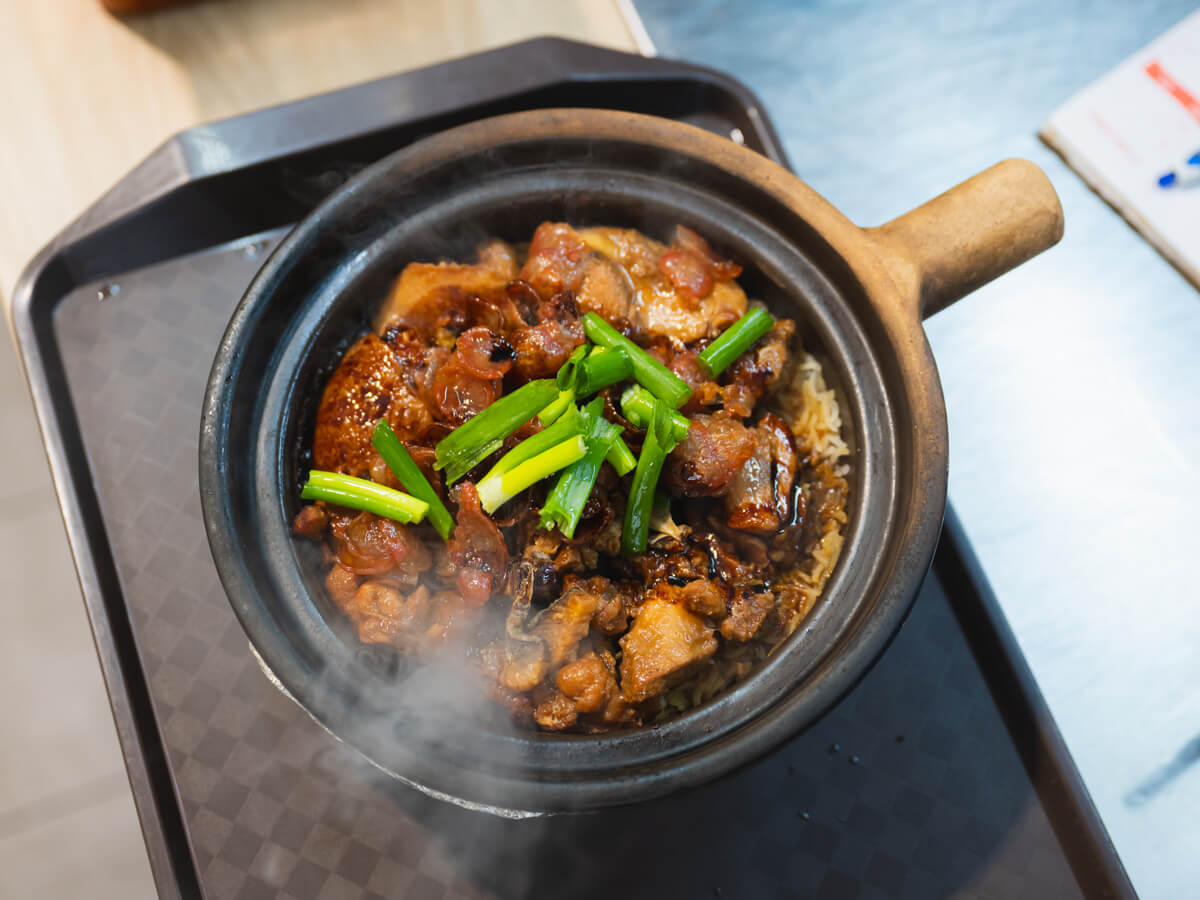
The history of claypot cooking can be traced back thousands of years. Originated from the Guangdong province in China, claypot rice is traditionally prepared atop a charcoal stove to impart a smoky flavour to the dish.
But this is increasingly becoming a dying craft because of its time-consuming and laborious demands. Some might wonder: What piqued Will and Damien’s interest in this old trade?
In fact, the two friends, whose friendship spans over a decade, started off doing something completely different.
The backstory
In 2008, the pair quickly hit it off when they met at Singapore Institute of Management Global Education, where they pursued a diploma in management studies. Later, they continued to keep in touch, even as they went on their separate paths — Will attended university in Australia, while Damien majored in economics and finance at SIM University of London.
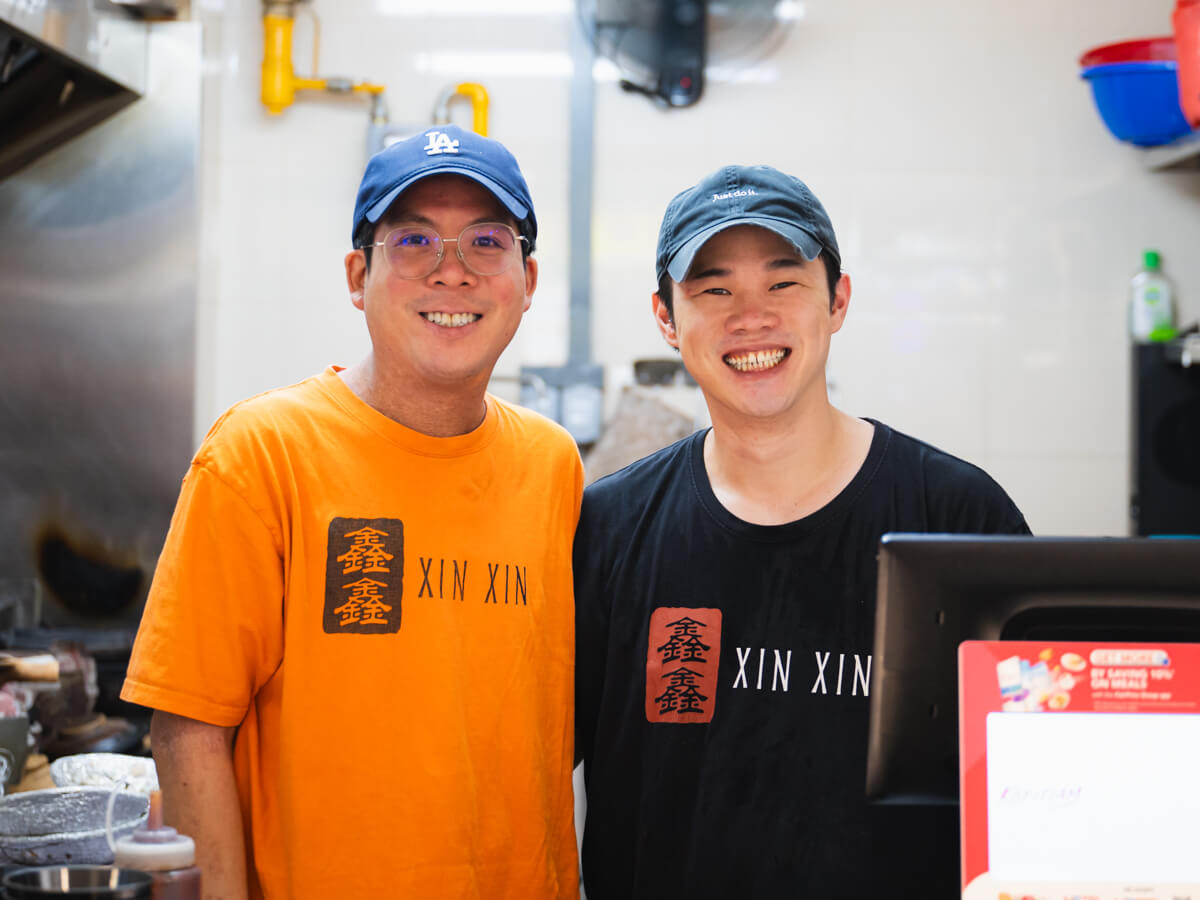
In 2016, the friends broached the idea of starting an ecommerce business together, selling Japanese bath towels. A year later, they decided to call it a day, as it was becoming unprofitable. That’s when they decided to turn their attention to a totally different industry: The F&B space.
Driven by a passion for food, they toyed with dishes such as scissors-cut curry rice and hokkien mee. But they soon shelved that idea — they figured it would be difficult to compete with other veteran players.
Eventually, they decided to try their hand at starting a claypot rice business and revive a dying trade.
They drew on the guidance and support from Damien’s parents, who run an economy beehoon and porridge stall in Kovan 209 Market and Food Centre.
Damien’s father even shared the claypot rice recipe with them.
”I learnt a lot from my dad about food preparation. He taught us to value the quality of food,” says Damien.
Mastering the craft
The journey to master the art of cooking claypot rice wasn’t easy.
Initially, they invested in electric induction cookers, before switching to gas, but found that these didn’t quite hit the mark. Eventually, a year later, they switched to using charcoal. “Straight away, charcoal wins. The flavour is way better,” says Damien, who is the stall’s main chef.

But learning to cook with charcoal was no easy feat. For six months, Damien experimented with controlling the fire — too hot and face the risk of burning the rice. It also took time to get the fire going. On top of that, charcoal is around two times more expensive than gas.
“The heat is next level,” quips Will.
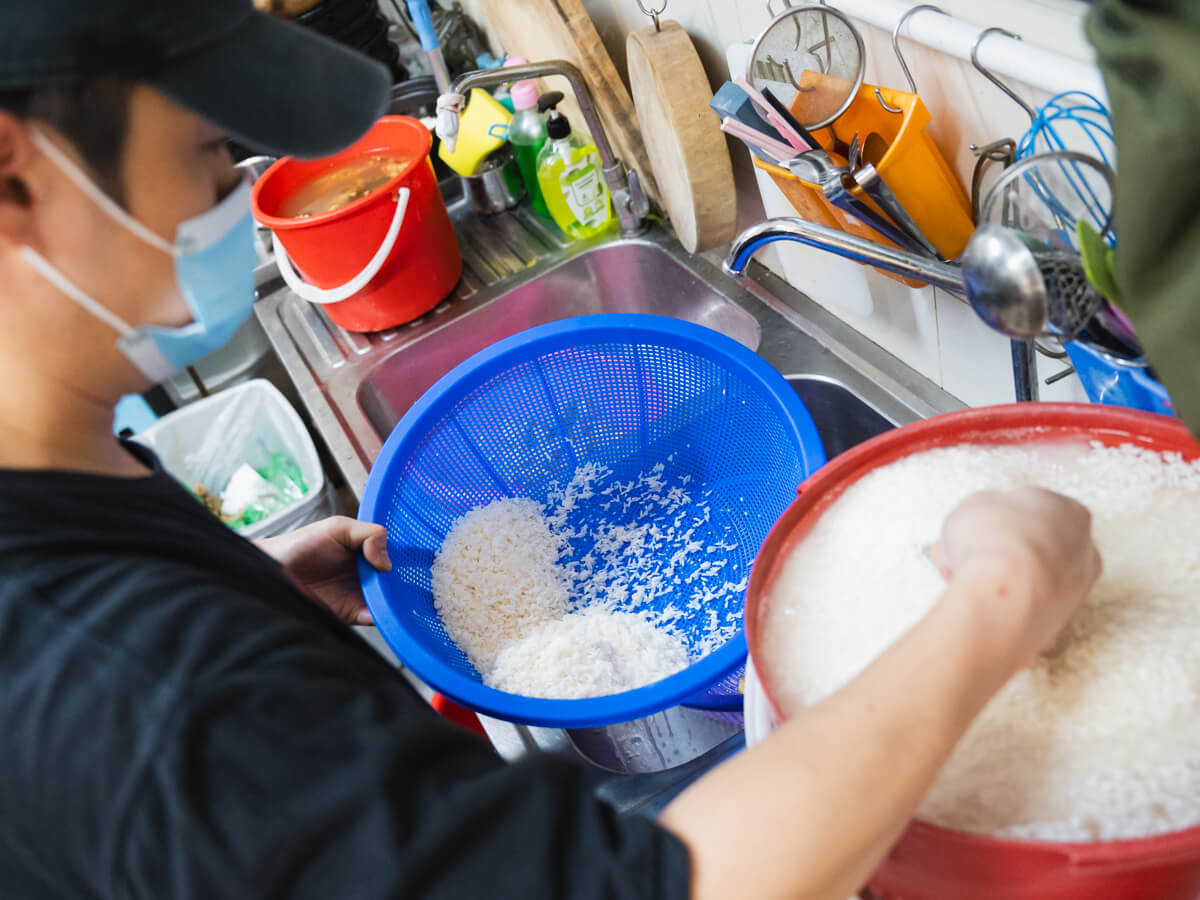
Next, they looked to perfect the rice, trying out many different brands of long-grain jasmine rice, from old to new crops. They also sourced for a supplier who imported lup cheong (cured Chinese sausage) from Hong Kong, which provides aromatics and juices that permeate through the rice.
The star ingredient is the chicken, which is marinated for a day in a special sauce of ginger, oyster sauce and Shaoxing rice wine, Damien reveals. They also decided to switch to boneless chicken to suit the diners’ preferences.
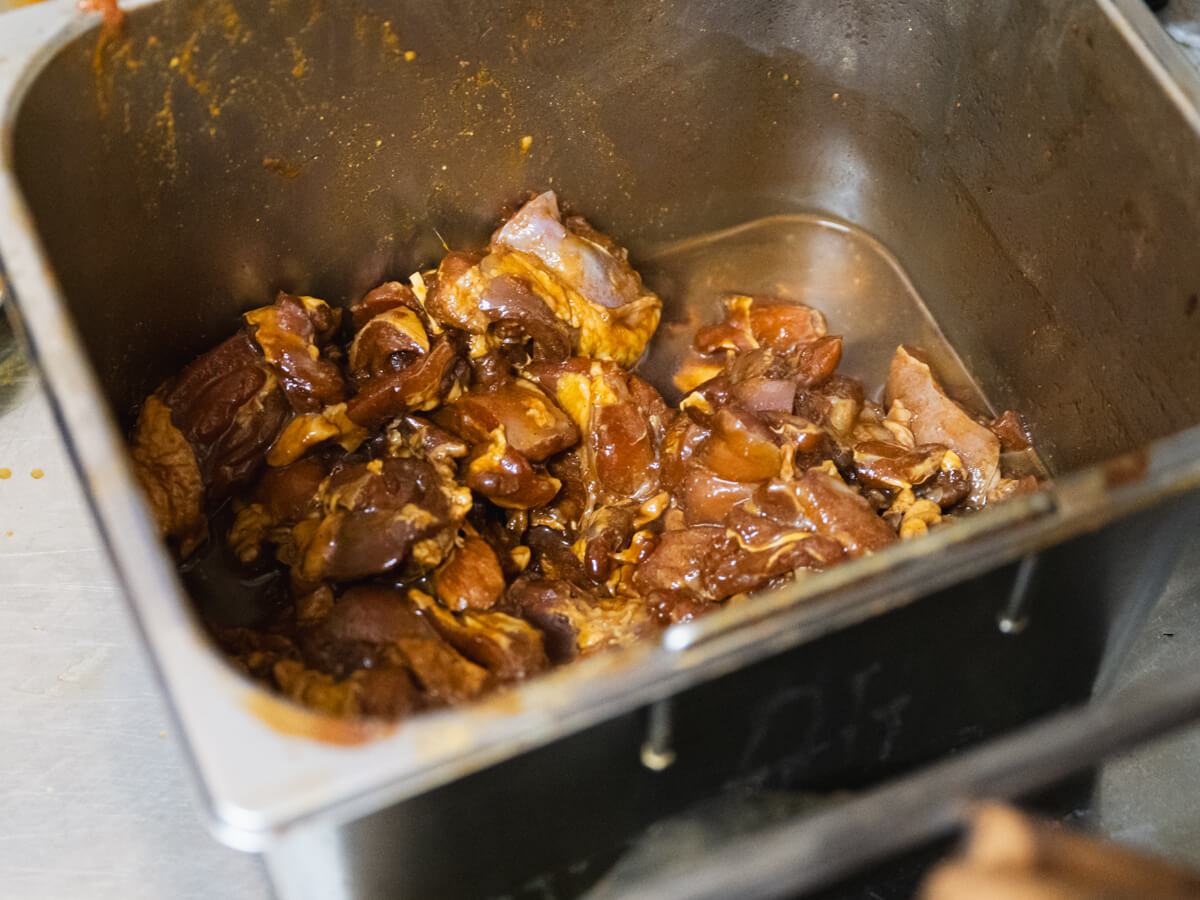
Initially, they started off selling at Kovan Food Centre, but found the footfall too low. In 2022, they shifted to Fernvale Community and Hawker Centre, an estate with a high proportion of young families.
The food
I head down during lunchtime in February to their home base in Fernvale. This was where I met Will and Damien, who seemed reticent at first and took time to warm up (pun intended).
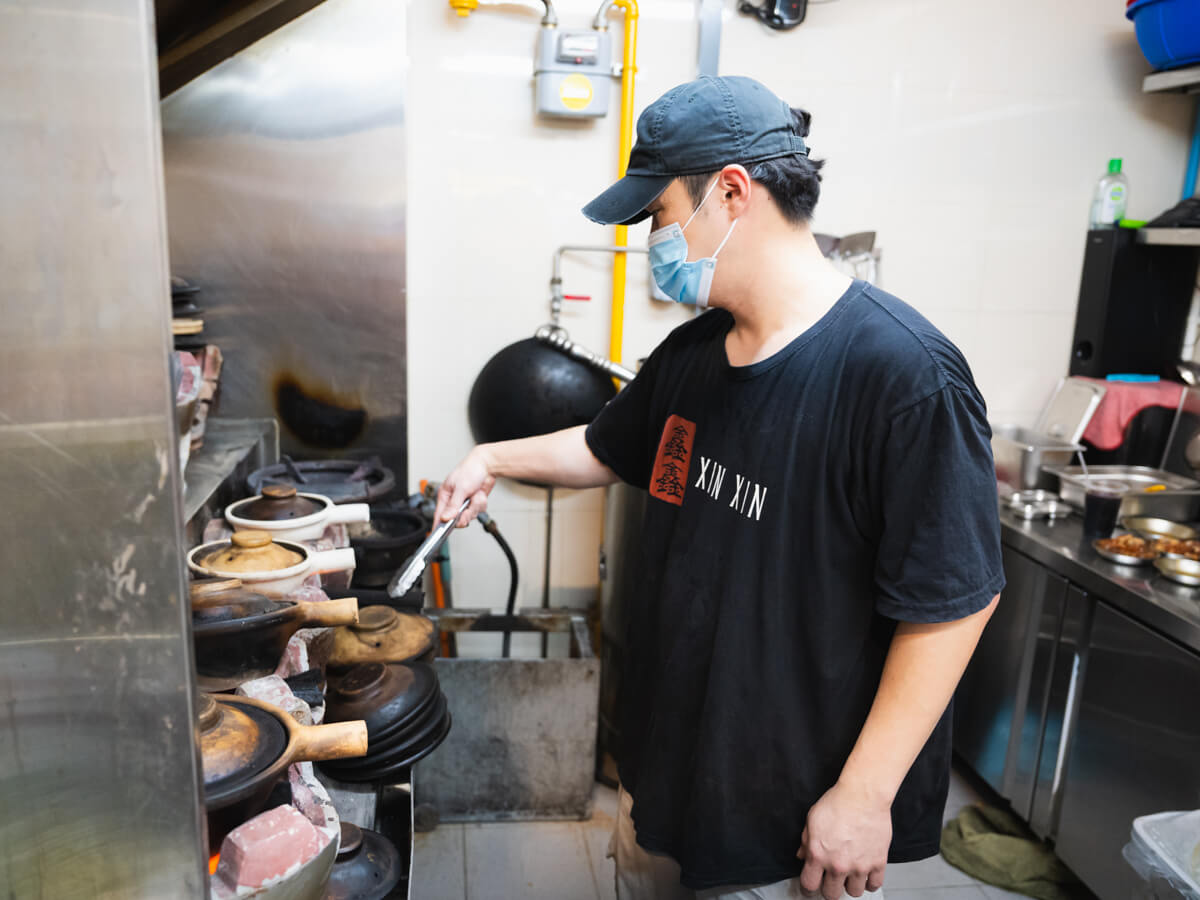
You can get the claypot rice in three sizes — S$7.50, S$15 and S$22.50. There is also the option of additional toppings such as salted fish, chicken, Chinese sausage, soup of the day, and oyster sauce vegetables.
Because I had not placed a pre-order prior to my arrival, it took 20 minutes for my order to be ready. But the wait was well worth it.
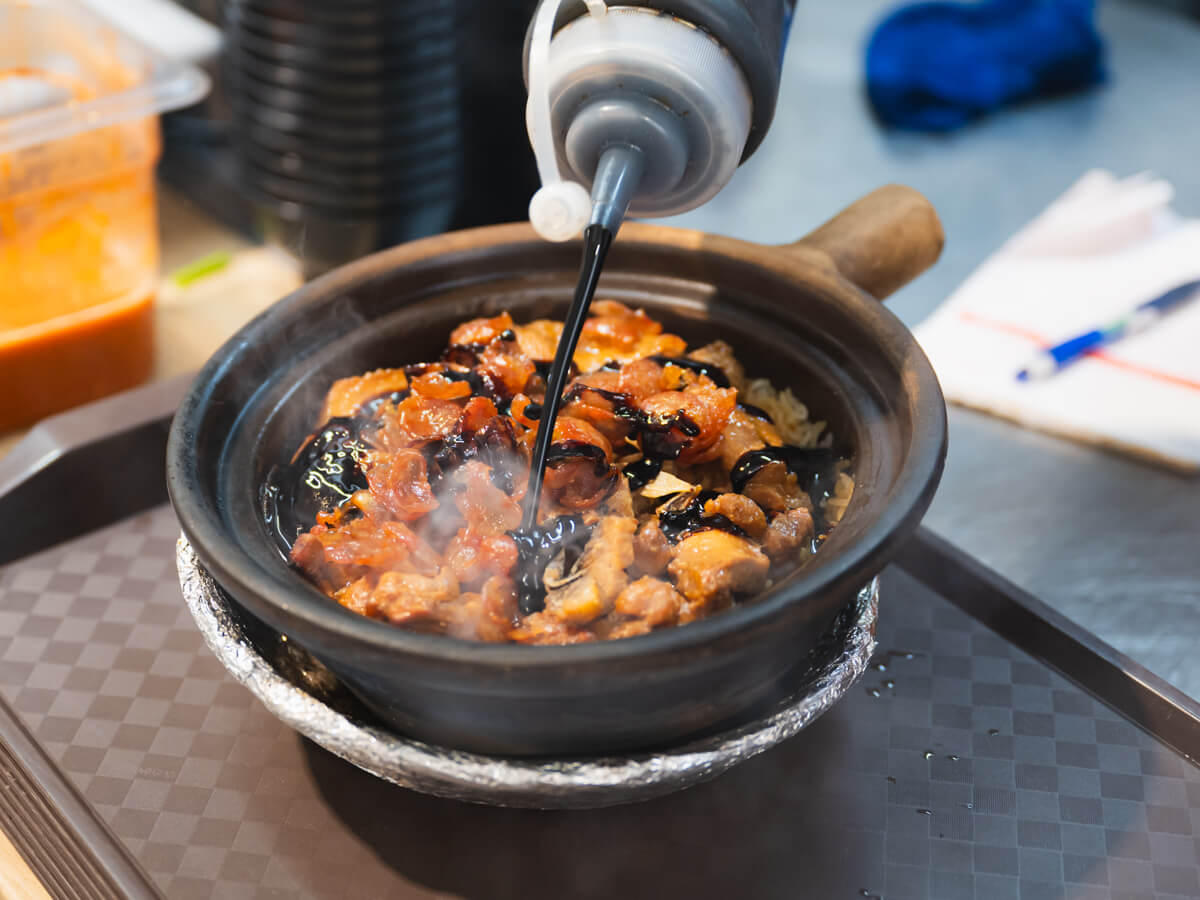
Served piping hot, the claypot rice came with a generous portion of ingredients. With relish, I dug into the fragrant and fluffy rice, which also offered a nice smoky char and tender chicken chunks within. The dish also came with a spicy, house-made chilli, adapted from Damien’s parents and imbued with their own adjustments. I did wish the dish came with more charred rice crust and burnt bits, though.
The challenges
Every morning, the young hawkers arrive at Fernvale at about 10am, where they get ready for the day’s work.
With claypot rice, the challenge is that it’s a generally slow-moving dish. It takes about half an hour for the fire to heat up and for the embers to burn bright, then another 20 minutes to cook the dish.
They have four to five claypots on the stove during lunchtime and increase it to nine pots during dinner time, though that can be “very tiring.”
To minimise the long waiting time, most of their regular customers who live nearby pre-order via WhatsApp. They also get their fair share of walk-in customers, from even as far as Jurong and Woodlands.
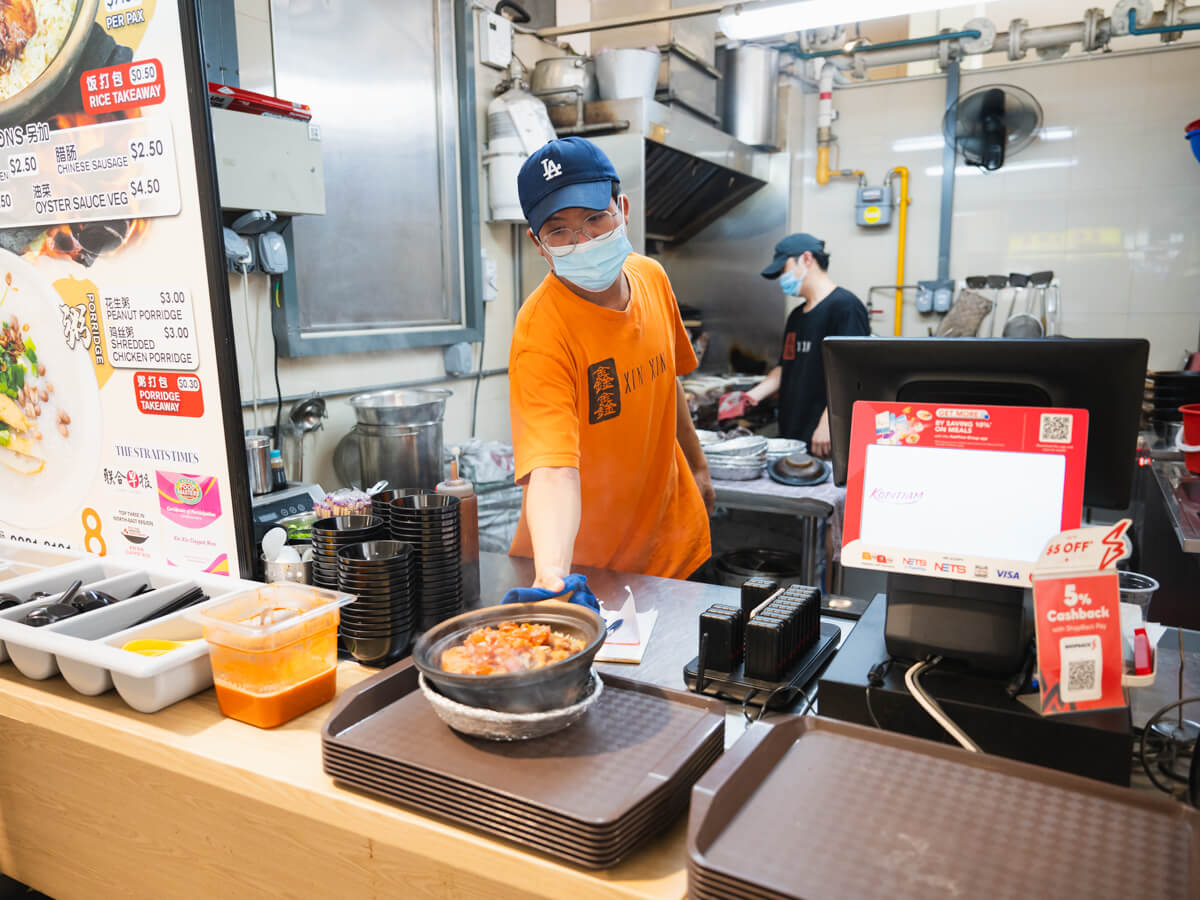
Attracting the lunch crowd is especially difficult, as people only have a short lunch break and cannot wait too long for their order. “On our worst day, we only sold six bowls. We just sat there for 1.5 hours, burning charcoal,” recalls Will, who handles the front of house.
But on good days, they can sell 30 bowls during lunchtime and 100 bowls during dinner.
Will likens the busy period to the arrival of MRT trains.
Adds Will: “I can be sitting there for the whole day. One person comes every 10 minutes…then suddenly you get three customers queueing up at the same time.”
The duo have to keep the fires going, regardless of whether we have customers or not. “The good thing is that time passes by more quickly,” he jokes.
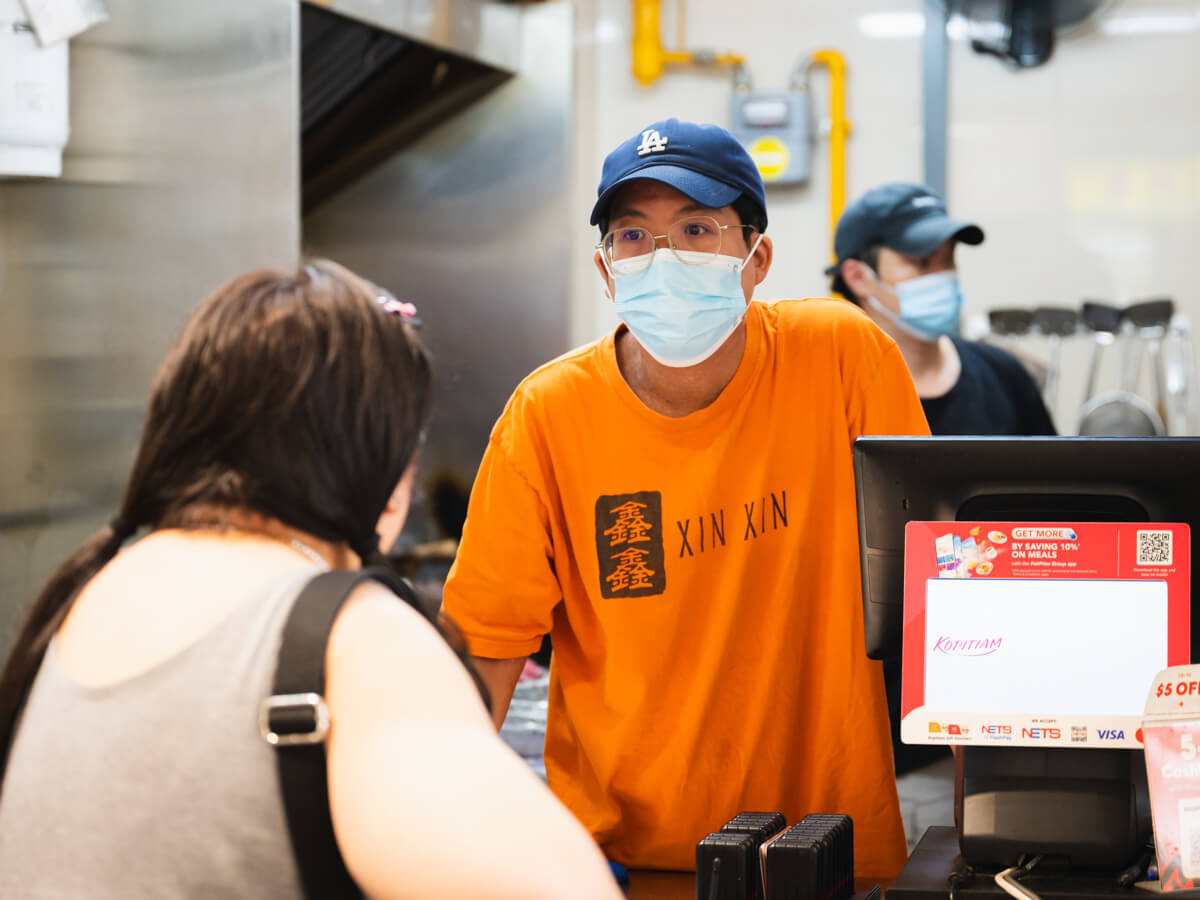
On top of that, they have to endure the heat for long periods. Even maintenance is an issue, as the stove and claypots will start to crack and break from the heat over time.
“It’s very tough work,” says Damien.
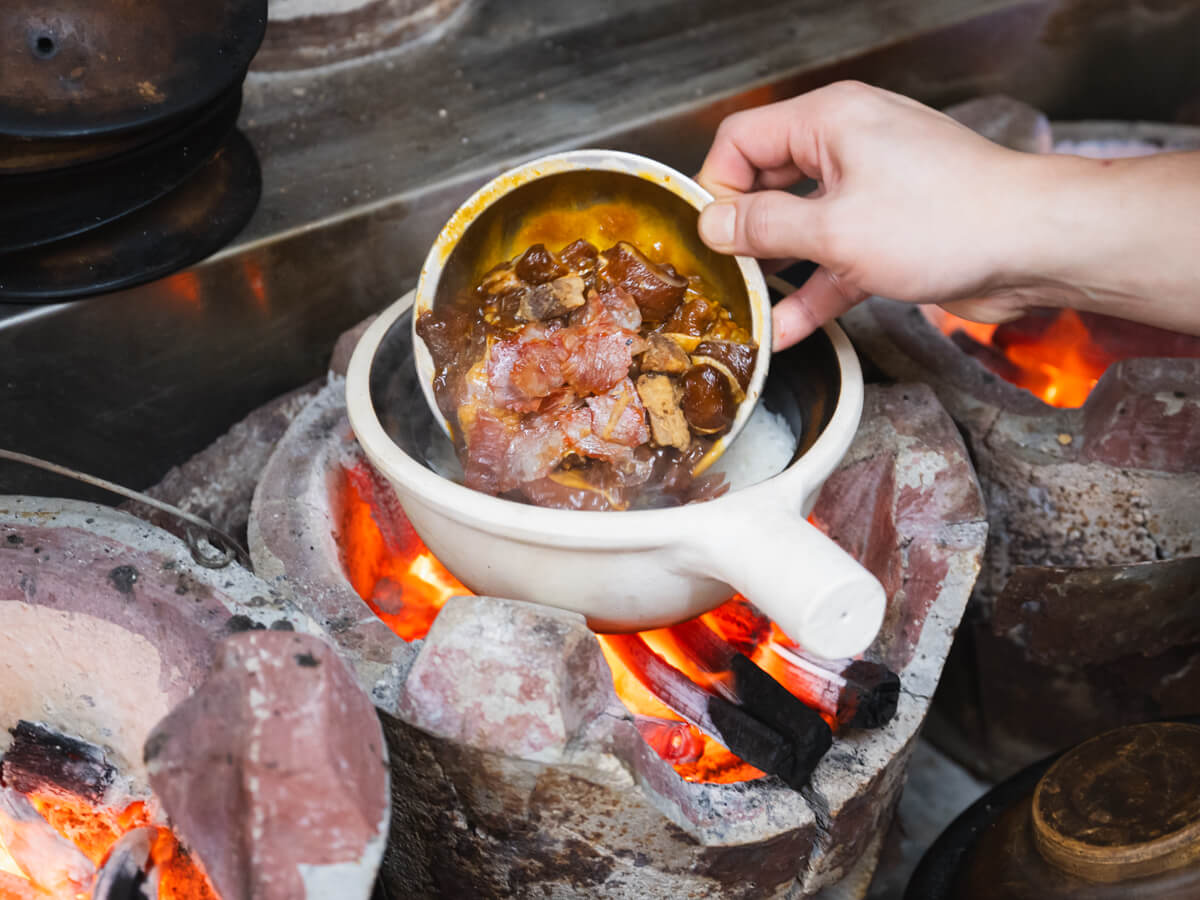
Naturally, conflict might arise between the two friends, either because they are tired, mess up an order or encounter fussy customers. But the easy-going pair say that they can settle the conflict within 30 minutes to an hour.
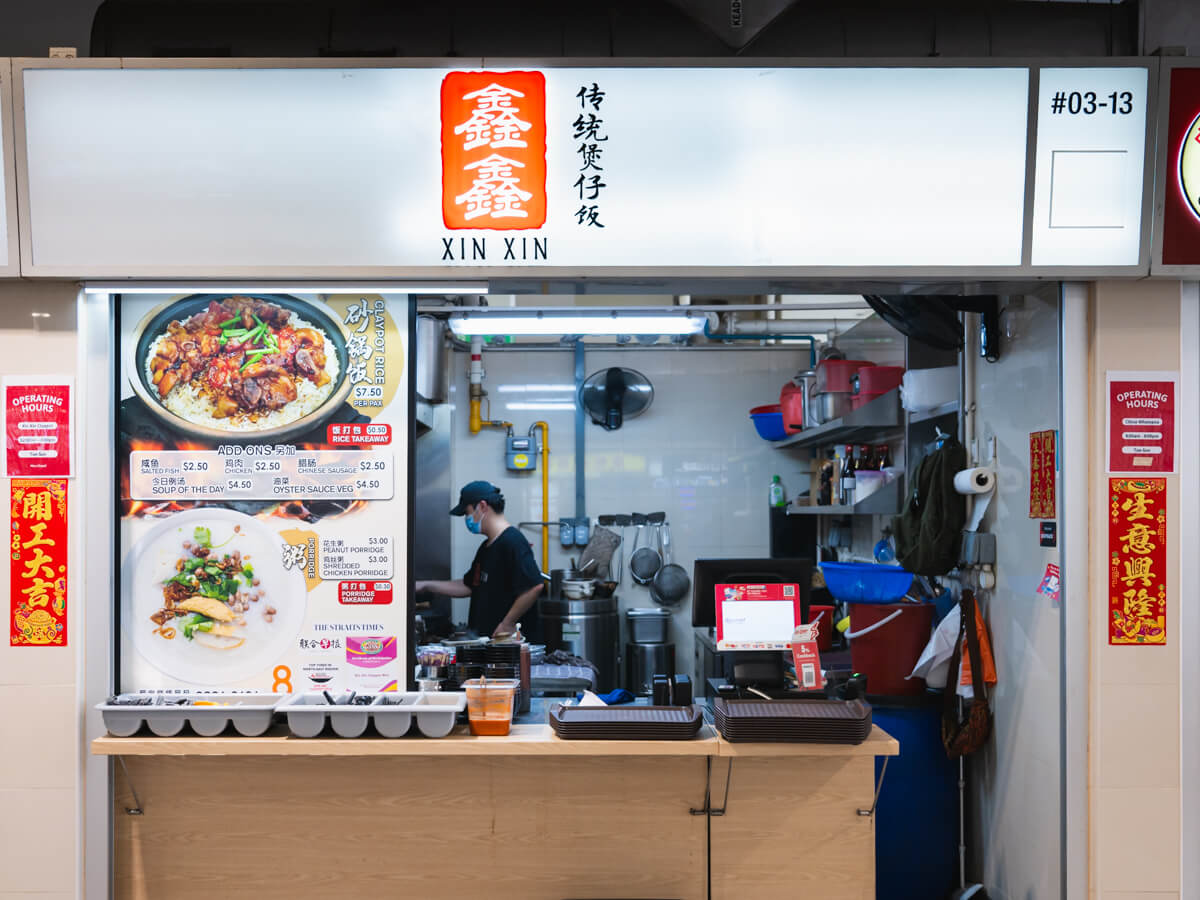
What’s next
Their lease at Fernvale ends in July, but they plan to stay put. They rely on their loyal following of customers to spread the word about their stall through word of mouth, reviews and social media.
In an era of instant gratification, they are grateful that people continue to support claypot rice businesses like theirs.
“We are appreciative of the customers who are willing to come down and even wait for 30 minutes,” said Will.
In the future, they plan to expand their menu, but have not made concrete plans due to manpower issues. Other than claypot rice, they also sell peanut porridge (S$3) and shredded chicken porridge (S$3).
There’s a distinct sense of pride as Will and Damien talk about Xin Xin, which strikes me as an underdog in a sea of heavyweights.
“It took us a while to gain recognition, and as we got better, we try to maintain our track record. I feel a great sense of achievement when we receive compliments on our food… and I don’t think we’re too far off from the more famous brands,” Damien says.
For stories on heritage eats, check out Chuan Ji, a bakery making a rare Hainanese delicacy. Otherwise, read about Li Jie De Dian, a Toa Payoh eatery serving up affordable eats that cater to the elderly.
Book a ride to Xin Xin Claypot Rice to try their signature claypot rice.
Do explore the new GrabFood Dine-in service for awesome deals.
